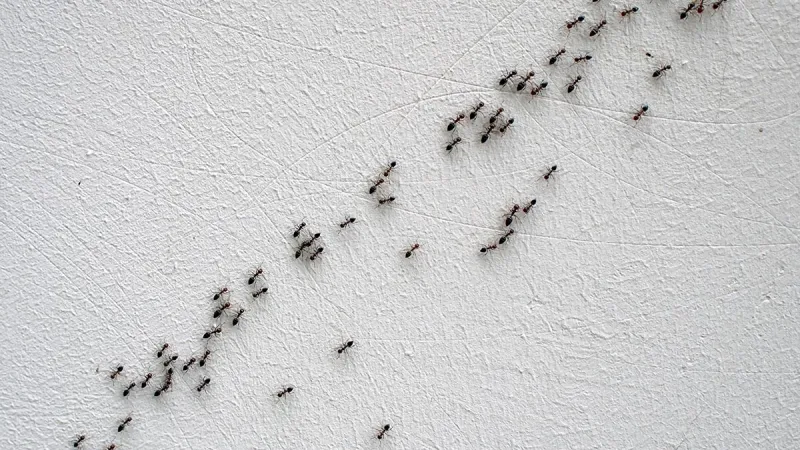
Odorous House Ants Information

Odorous House Ants (Sugar Ants)
Dark Brown to Black in color. Also commonly referred to as sugar, stink and coconut ants. Develop large colonies numbering in the thousands with multiple queens. Often do not feed on baits, so direct treatment of the colony is the best course of action. Typically nest outdoors under ground cover, mulch, other landscaping materials, however, they will nest inside wall voids as well. Keep landscape areas neat, rotate mulch/pine straw annually to keep their natural nesting grounds clear.
More about Odorous House Ants
Odorous house ants, scientifically known as Tapinoma sessile, are a species of ant that is commonly found in various parts of the world. These tiny insects, also known as sugar ants, are known for their distinct smell and unique behaviors. BREDA Pest Management explores the world of odorous house ants, or sugar ants, including their behavior, anatomy, life cycle, and their intriguing odor.
Odorous house ants are small ants, typically measuring between 2.4 to 3.3 mm in length. They are typically dark brown to black in color, and their bodies are segmented, with a distinct head, thorax, and abdomen. One of the most notable characteristics of sugar ants is their smell. When crushed, they emit a pungent odor often described as a "rotten coconut" or "sweet, musty" smell, which gives them their name "odorous" house ants.
One of the intriguing aspects of sugar ants is their behavior. They are social insects that live in colonies with multiple queens and can have thousands of workers. They are primarily active during the warmer months and forage for food both indoors and outdoors. Sugar ants have a preference for sweet foods, such as nectar, honeydew from aphids, and sugary human foods, which often leads them to invade homes and other structures in search of food.
Sugar ants are known for their ability to establish satellite colonies, which makes them difficult to control. They typically nest outdoors in a variety of locations, including under rocks, logs, and debris, in tree cavities, and even in lawns. When they invade homes, they can establish nests in wall voids, under floors, and in other hidden areas, making it challenging to locate and eliminate their colonies.
The life cycle of sugar ants begins with the queen laying eggs. The eggs hatch into larvae, which go through several stages of development before becoming adult ants. The time it takes for sugar ants to go from egg to adult can vary depending on factors such as temperature and food availability. Once the adult ants emerge, they take on various roles within the colony, including foraging for food, caring for the brood, and defending the nest.
Despite their small size, sugar ants can have a significant impact on the environment and human structures. As scavengers, they help break down and recycle organic matter, and they can also act as predators, controlling other insect populations. However, their preference for sweet foods and their ability to establish colonies in homes and structures can make them a nuisance to homeowners and businesses.
Managing sugar ant infestations typically involves a combination of preventive measures and targeted treatments. Keeping food sources sealed, maintaining clean living spaces, and sealing cracks and openings in structures can help prevent ant invasions. If an infestation occurs, using ant baits and other targeted treatments can be effective in controlling their populations.
Sugar ants may be small in size, but they have a unique odor and intriguing behaviors that make them fascinating insects to study. Understanding their behavior, anatomy, and life cycle can help in managing and preventing infestations, and appreciating their role in the environment as scavengers and predators.



